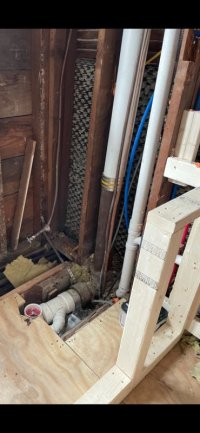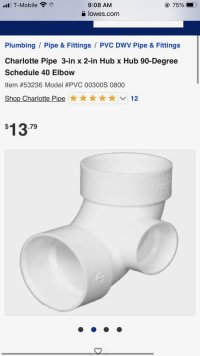Hi,
I am in a pickle and need some advice.
We are renovating a bathroom and the plumber forgot to mention after replumbing everything that the rough for the Toilet is at 17 inches!
Apparently there was an extra wall behind the toilet that no one realized.
I am attaching a photo of the setup now.
A plumber Friend recommended a different fitting but this plumber says it’s against code and dangerous for backups.
Any advice or help would be great since they already tiled and the contractor wants to a small 3 foot wall 4in deep behind the toilet.
I attached a photo of the setup before they closed it. Also the piece my plumber friend recommended.
The current plumber suggested a 14 in rough toilet plus installing it ~2 in offset if possible.
Thank you in advance!
I am in a pickle and need some advice.
We are renovating a bathroom and the plumber forgot to mention after replumbing everything that the rough for the Toilet is at 17 inches!
Apparently there was an extra wall behind the toilet that no one realized.
I am attaching a photo of the setup now.
A plumber Friend recommended a different fitting but this plumber says it’s against code and dangerous for backups.
Any advice or help would be great since they already tiled and the contractor wants to a small 3 foot wall 4in deep behind the toilet.
I attached a photo of the setup before they closed it. Also the piece my plumber friend recommended.
The current plumber suggested a 14 in rough toilet plus installing it ~2 in offset if possible.
Thank you in advance!


